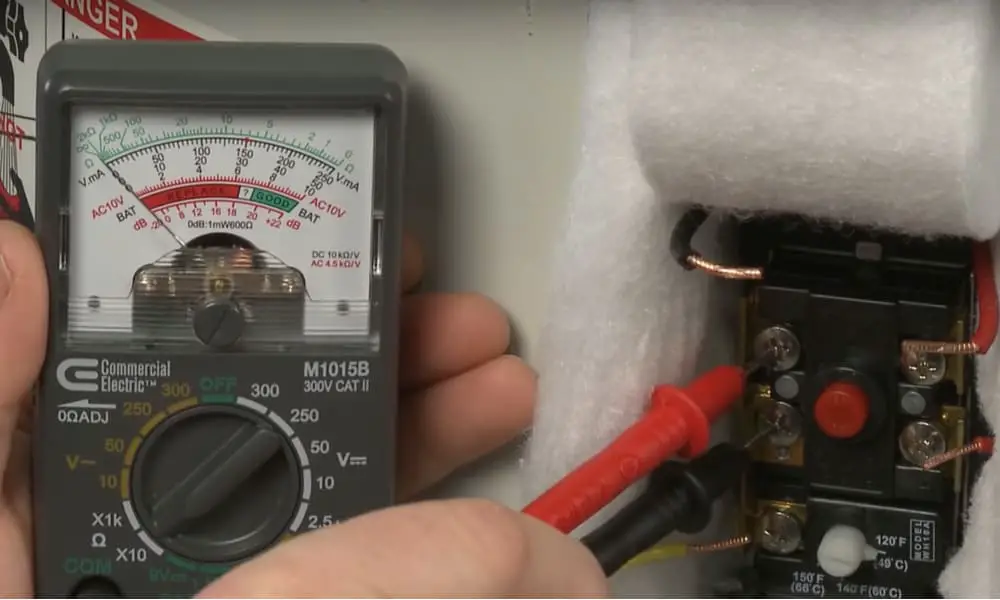The thermostat controls the temperature of the water heater. If the temperature is too high, you must adjust the thermostat to make it less hot. You can also use a multimeter to check the resistance of individual wires and screws. Turn off the power supply and insert a voltmeter. Place the test probes on the terminals 1L and 3L of the high limit part of the thermostat. Note the resistance readings and compare them with the input voltage of the water heater. If the meter reading is not correct, it may be due to a loose connection, blown fuse, or tripped circuit breaker.

To test the water heater thermostat, turn off the power and check the voltage of the unit. If the water is warm but not hot enough, the voltage is too high. To fix this, you need to replace the thermostat. You can also use a digital thermometer to check the temperature of the water. Using a voltmeter is an easy way to check the temperature of your water heater. It can also be used to determine whether your system needs to be replaced.
Once you’ve completed the first step, you can move on to the next step. Before you perform any further testing, you must turn off the power to the water heater. Then, turn on the water heater and remove the old thermostat. The thermostat is now good to use. You can try adjusting it again once you know what the problem is. If the temperature is still too low, you can check the contacts with a multimeter.
If the temperature is too high, turn the water back on and check the temperature again. It’s important to check that the heater is not on. The lower thermostat should be set to the highest temperature. You can also turn it down to the lowest temperature. If the thermostat is too hot, you need to adjust the temperature again. This will ensure that your system is not too hot. This should be your next step. If it’s too hot, replace the lower thermostat.
The second step is to test the lower thermostat. You can do this by using a multimeter. Just make sure that the leads of the multimeter are placed on opposite ends. If the leads are connected, you will have to turn off the power source. The thermostat should now be turned off. Once the upper thermostat is working, you need to turn the heat on. If the lower thermostat is not, it should be replaced.
The upper thermostat is the first thing to check. The water temperature in the tank should be at least 30 degrees below the maximum setting. If the thermostat is working properly, the power supply will be turned off. Then, you need to disassemble the heater. Remember to turn off the power supply and the multimeter. If it’s not, you’ll have to replace it. A properly functioning water heater is the best way to save money on electricity.
The first step is to turn off the power to the water heater. You will need to remove the access panels and insulator to access the thermostat. Once you’ve done this, you should be able to test the thermostat. To make sure that the heater is working properly, you need to open the access panels. You can then fold the insulator over the heating element. If the connection is not working, you may have to change the insulator.
To test the thermostat, you must turn off the power to the water heater. Once the power is off, check the voltage with a multimeter. It should be between two hundred and four hundred Volts. The thermostat should be on the lowest or the highest temperature setting. To check the resistance, you can disconnect both leads from the upper heating element. If the two leads don’t show continuity, you can test the lower thermostat.
To test the thermostat, you must connect the two leads of the multimeter to the two terminals of the heating element. The heating element and thermostat go hand in hand; the latter is the most important part of your water heater. They should work together, so you’ll need a multimeter and a screwdriver to do the tests correctly. After you’ve done the tests, you should turn the water heater back on and check for problems.

